#smooth Japanese maple
Text
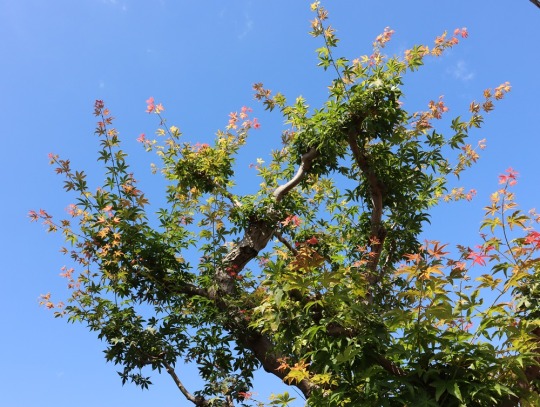
イロハモミジ(10月7日)
Klon palmowy (Acer palmatum)
Japanese maple, palmate maple, or smooth Japanese maple (Acer palmatum)
4 notes
·
View notes
Text
things i've noticed about HSR characters bc i literally have nothing better to do with my time
part one: Mr. Guard Dog cold dragon young himself:
✨Dan Heng✨
also i really really really love character design and desperately want a job in the field one day so maybe this can just be a practice in observation



Dan Heng scrunches his nose when he's bein protective
*someone threatens the Express*
Dan Heng: ò^ó
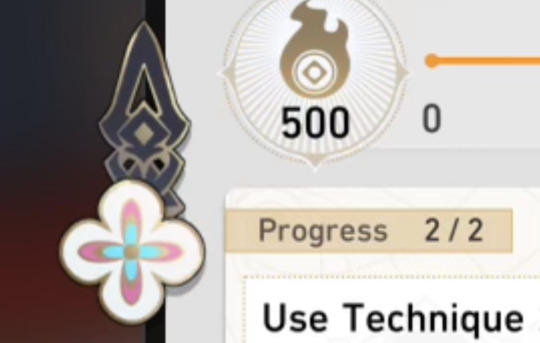

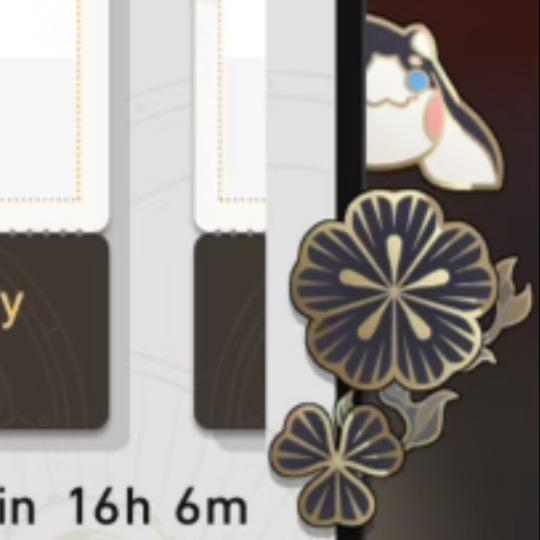
he {along with the trailblazer} doesn’t have an icon on the missions panel
-> The spear is Welt's, as seen in the middle image
although i suppose the spear could be Dan Heng's and the little circles inside the flames could be Welt but the design is closer to the old man's


✨☁️CLOUD MOTIFS☁️✨
-> that's such a corny cute lil detail, i love it



compared to Stelle and March, his Astral Express badge is a lot harder to see
-> you have to rotate his avatar to get clear visual of it [also another cloud emblem on his pant leg]




i almost didn't want to include this one because it's such an obvious detail [the writing, not the attacks] that it's not really 'noticing' it's 'commenting'
-> still tho, im curious as to what the script on his coat means. and im an absolute sucker for this kinda design
-> His attacks mimic calligraphy strokes!



finally, maple leaves. more specifically- the symbolism behind these leaves
-> It varies a little between cultures but the most common interpretations are 'honor', 'wisdom', and 'strength'
-> it can also be taken as a symbol of protection, but that's lesser known
-> Celtic, Chinese, and Japanese folklore all liken the leaves to an abundance of character but both Chinese and Japanese cultures see them symbolic of 'lovers'
what's really interesting about the 'honor' aspect is that Blade's moniker 'Blade' is also a symbol of honor
-> which ties their characters together a bit more but also mb smth else yk yk
^ that's purely speculation and hopefulness though, i have no basis for it
HC for the road: Boothill saw Dan Heng scrunch his nose during the time they were teamed up and instinctively poked at it to smooth it out [it reminded him of when his daughter would pout]
if you enjoyed this lmk!! i'd be more than happy to do this with any other characters as well, within or outside hoyo's reach >W<
#this literally brings me unprecedented amounts of joy#hsr#renheng#honkai star rail#dan heng#hsr dan heng#hsr blade#hsr boothill#hsr headcanons#astral express#character study#character analysis#found family#floriography
119 notes
·
View notes
Text

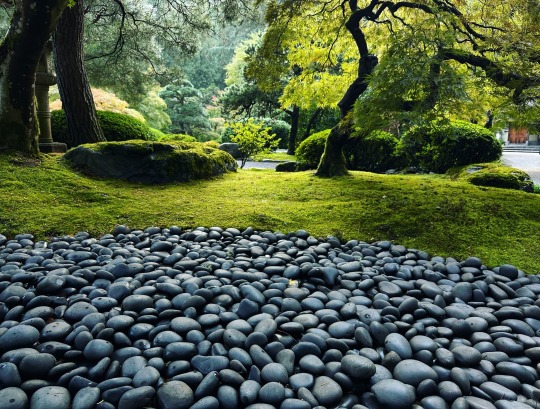

Fall’s first touches at The Portland Japanese Garden. I love this place. 🎋
***
The green mossy area below a winding Japanese garden tree. Light yellow leaves drape across the mossy light brown mushrooms below the bushes and snarled trees.
An unusual foreground filled with a basin of smooth, round black rocks, each placed in perfect harmony. The background of bright lime greens and forests of green trees and bushes arches over the center top of the photo.
A Japanese lace-leaf Maple arches over a green, soft, mossy bed with a sleek mirrored pond behind. The leaves are still holding on, mostly green, but each giving way to the cool touches of fall's kiss. For now, the butter-yellow tips only touch the tree’s top leaves.
#japanese garden#oregon#Portland Japanese Garden#japanese maple#trees and forests#moss#mushrooms#leaves#summers end#rock gardens#nature heals#japanese#portland
8 notes
·
View notes
Text





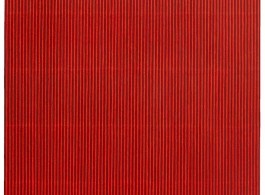


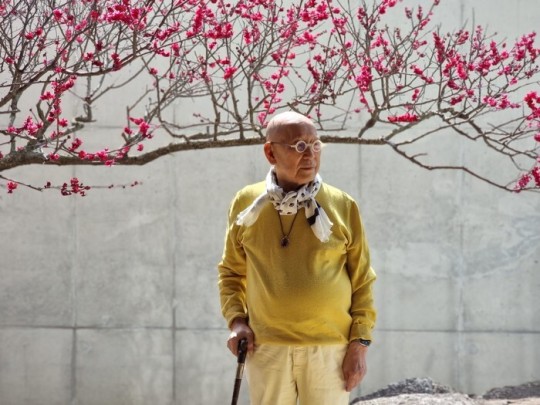
Park Seo-Bo, a key figure in South Korea’s Dansaekhwa Movement, died this month at the age of 91.
Born in 1931 in North Gyeongsang, a Japanese-occupied region of South Korea, to a family of eight children, he pursued training in traditional painting at Hongik University in Seoul. In 1950, his education was interrupted when he was drafted to serve in the Korean War.
“There was no food, no job opportunity, everything had gone back to ashes; all conventional values and ideas were laid naked and bare.” the artist said in a 2008 interview with the New York Times about the affects of war on him and his peers. He looked at painting as self-referential. “For me, painting has become a mere tool and method to cleanse and purify myself,” he said.
Park Seo-Bo is one of the leading figures in contemporary Korean art, widely acknowledged as the father of the ‘Dansaekhwa’ movement. Encompassing works from the 1970s to this year, this exhibition at White Cube West Palm Beach serves as an introduction to Park’s influential practice, as well as being the first opportunity to see his work in the US since it was shown at the Solomon R Guggenheim Museum in 2019.
A series of vividly coloured ceramic works made in the past year reveal an artist continuing to innovate into his nineties. In collaboration with a master ceramicist’s studio, Park has worked with wet clay in a similar manner as he has previously when he is manipulating the wet pulp of hanji paper, a medium he uses in other works. For this group of works, successive layers of wet clay slip are pinched and pushed line by line into long, parallel ridges, and, after firing and sanding, contrasting pigments are then carefully applied to the furrows and peaks of the fired surface. This latest evolution of technique and introduction of a new material is true to the energetic, naturalistic materiality and tactility that characterises Dansaekwha.
Park’s use of traditional Korean hanji paper, hand-made from mulberry bark, an earlier innovation dating from the 1980s, is represented here by exceptional large-works in subtle shades of grey-black and in blazing, vibrant red. The remarkable durability of hanji has ensured the survival of some of the most ancient scriptures of Buddhism in Korea and is integral to the structure of daily life, including being used in wall coverings and door panels. To Park, the material not only offered endless opportunities for experimentation but represented the connection between his work and the natural world which he had begun to regard as essential. When applied on to a canvas backing and soaked with water, the hanji reverted to a pulp that could be pushed and scraped into sculptural forms.
Park mixes pigments that further evoke connections to nature, as well as to personal memory. The black works have the deep, matte darkness of the charcoal and soot that built up in layers around the artist’s childhood hearth, while the vivid red was inspired by the maple forest in autumn foliage around Mount Bandai near Fukushima in Japan. Within the compositions, smooth rectangular areas or ‘windows’ of single colour offer a textural contrast and a ‘breathing hole’, to let the mind rest.
Several exceptional works from the 1970s testify to the epiphany that was to prove so formative to the development of Korean minimalism or ‘Dansaekwha’. Park calls these ‘Myobop’, a word taken from the Chinese characters ‘to draw’ and ‘a method’, which has been translated by the French term ‘Écriture’ (writing). Centring on an exploration of drawing within painting and on the union of action and spirit, they reflect a consistent approach, one that is inextricably linked to time, space and material; concepts that underpin all of Park’s practice. In these works, mark-making becomes akin to breathing and emptiness is achieved through reduction, a process that Park has termed “forgetting the self”. Executed within a single sitting, harnessing an energy flow through meditative action, they combine technical skill with mental focus, within a defined period of time. This method reflects that, for Park, the making of art is rooted in a spiritual methodology, drawing on Confucian, Taoist and Buddhist philosophy as well as the Korean tradition of calligraphy.
18 notes
·
View notes
Text

Acer palmatum ’Atropurpureum’ — Japanese maple a.k.a. palmate maple a.k.a. smooth Japanese maple
8 notes
·
View notes
Text
Urbanite Penjing Park
Originally posted January 7th, 2024
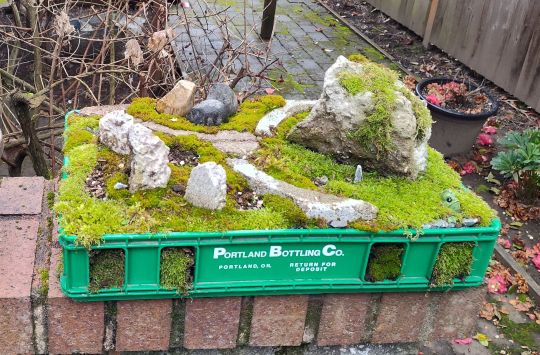
It’s incredible what you can do with a sudden burst of inspiration! This past Thursday, I came home from work, took a step out onto the porch to view my garden, and saw the broken pieces of concrete that used to be in the bottom of a pot in which I grew cannabis. I also saw the old milk crate, some other pieces of stone, a container of soil, when suddenly I got hit with creative energies from the cosmic beyond. I turned some curved pieces of concrete on their side, and noticed it looked sort of like a pathway, sort of like a sidewalk in the city or around a park coming together with a lovely little circle in the center. I got right to work designing a new penjing!
Not thinking this is where the day would end, I was amped up with energy to use my creative potential. I lined the entire bottom of the green crate with a large piece of window screen to keep in as much dirt as I could. The screen is held down into place by the weight of the concrete. I’m unsure what these curved pieces once belonged to, but now they make the winding paths of Urbanite Penjing Park. I packed in the soil to keep it from spilling out the holes in the side, and then I covered each of the outside holes with grassy moss to help keep everything inside. Everything was seeming to stay in place. We’ll see if it survives the rain!
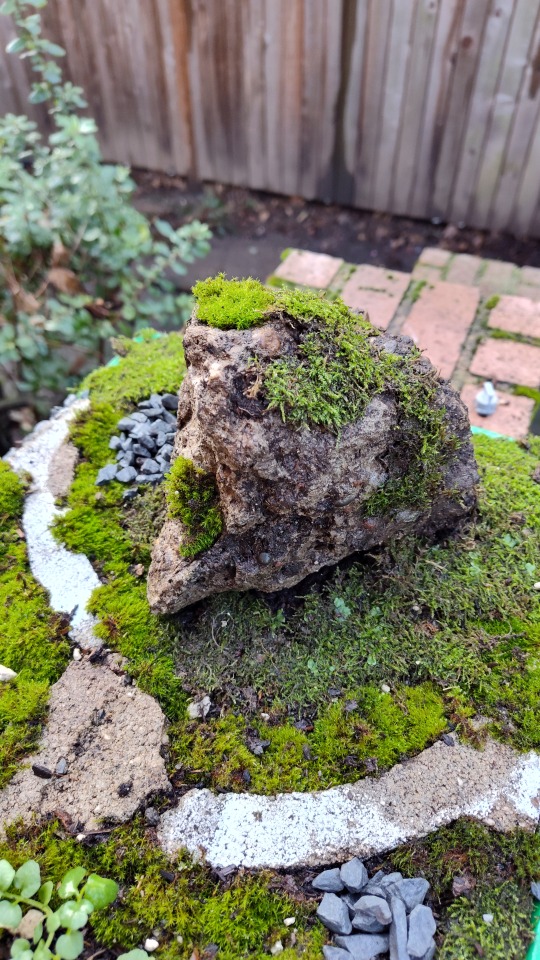
A few rocks of concrete would make a mountain for the display. Initially I stacked one rock on the other, but decided to take it down to the one piece. I added moss on the rock to give it a finished look. I also laid moss carefully along the edges of the “sidewalk” and throughout the whole project. Other smaller rocks make a small monument in one of the park sections.
I decided that I would only put items into this penjing that I can acquire for free. I found one plant in the display growing in the sidewalk near a convenience store around the corner from me. Some Japanese Maple seeds were planted in the center of the three smooth stones. Other areas for plants have been marked by small beds of gravel. I’m hoping to find a few ferns in my travels to add to the exhibit!
If I could start over, one thing I would do is place a piece of wood down under the crate to help move the display around. It feels too flimsy to do so at the moment.
This is definitely one project that is going to change and grow over time as I find things I want to add to it. I’m looking forward to the possibilities that lay ahead in landscaping this miniature urban park. Patiently away the new growth!
2 notes
·
View notes
Text
Soba with Tofu and Miso-Mustard Dressing: A Protein-Packed Vegan Dish
In the realm of vibrant, nutrient-dense vegan meals, Soba with Tofu and Miso-Mustard Dressing stands out as a deliciously balanced option. This dish masterfully combines the nutty, earthy flavors of soba noodles with the rich, umami notes of miso and the tangy kick of mustard. Paired with protein-rich tofu, it not only provides a satisfying meal but also packs a nutritional punch.
Why You'll Love This Dish
Soba Noodles: Soba, made from buckwheat flour, is a staple in Japanese cuisine known for its nutty flavor and chewy texture. It's a great source of plant-based protein and fiber, making it a healthy choice for a filling meal. These noodles are also naturally gluten-free, though you should check the label to ensure there’s no wheat flour mixed in.
Tofu: Tofu is a versatile protein source that absorbs the flavors of whatever it's cooked with. In this recipe, it complements the soba noodles perfectly, adding a hearty texture and a boost of protein. Whether you prefer it crispy or soft, tofu enhances the dish's nutritional profile while remaining delightfully adaptable.
Miso-Mustard Dressing: The star of the show is the miso-mustard dressing, which brings a harmonious blend of salty, tangy, and umami flavors. Miso, a fermented soybean paste, adds depth and complexity to the dish, while mustard provides a zesty contrast that brightens up each bite. This dressing is not only flavorful but also packed with beneficial probiotics from the miso.
How to Make It
Ingredients:
Soba Noodles: Cooked according to package instructions.
Tofu: Firm or extra-firm, pressed and cubed.
Miso-Mustard Dressing: A mix of white miso, Dijon mustard, rice vinegar, a touch of maple syrup, and a splash of soy sauce.
Instructions:
Prepare the Tofu: Sauté the tofu cubes in a bit of oil until golden and crispy on the outside. Set aside.
Cook the Soba Noodles: Boil the soba noodles as per the package instructions. Drain and rinse under cold water to stop the cooking process.
Make the Dressing: In a bowl, whisk together miso, Dijon mustard, rice vinegar, maple syrup, and soy sauce until smooth and well combined.
Assemble the Dish: Toss the soba noodles with the dressing until well coated. Gently fold in the crispy tofu cubes.
Serve: Garnish with chopped scallions, sesame seeds, or your favorite vegetables for added crunch and freshness.
For a more detailed look at this recipe and to explore additional tips for making the perfect miso-mustard dressing, visit the Soba with Tofu and Miso-Mustard Dressing page.
Conclusion
This dish is a great example of how simple ingredients can come together to create something truly special. With its combination of soba noodles, tofu, and a savory miso-mustard dressing, it’s not just a meal but a celebration of flavors and textures. Whether you’re a seasoned vegan or simply looking for a wholesome, plant-based meal, Soba with Tofu and Miso-Mustard Dressing is sure to satisfy.
0 notes
Photo

イロハモミジの若葉の色が夢のように美しい(4月23日)
#Acer palmatum#Japanese maple#palmate maple#smooth Japanese maple#klon palmowy#tree#drzewo#fresh green#świeża zieleń#japan
2 notes
·
View notes
Text
Sticks and Scones: A Bakeshop Mystery by Ellie Alexander #Review @StMartinsPress @BakeshopMystery

Coming August 20, 2024
Sticks and Scones: A Bakeshop Mystery
Cozy Mystery
19th in Series
Setting - Oregon
Publisher : Minotaur Books (August 20, 2024)
Mass Market Paperback : 336 pages
ISBN-10 : 1250326192
ISBN-13 : 978-1250326195
Kindle ASIN : B0CPWT7HT9
Audiobook ASIN B0DC752KPJ
It’s late spring in Juliet's charming hamlet of Ashland. Spotted deer are nibbling on lush green grasses in Lithia Park, the Japanese maples are blooming, and Torte is baking a bevy of spring delights—lemon curd cupcakes, mini coconut cream pies, grapefruit tartlets, and chocolate dipped almond Tuiles.
Meanwhile, Juliet's friend Lance, the artistic director of the Oregon Shakespeare Festival, is taking center stage with his new theater troupe—the Fair Verona Players. Their performance in Uva's vineyard promises to be a modern, gender-bending twist on "The Taming of the Shrew," but as the curtain rises, so do the strange occurrences. Stage mishaps and internal bickering threaten to derail the production. But the real show begins when the leading actor, Jimmy Paxton, meets his final curtain call. Now, Jules is not only in the mix, but she's going to need to craft the perfect recipe for solving this theatrical whodunit.
Dollycas's Thoughts
It is a pleasure to be back in Ashland, Oregon. Juliet's friend Lance is taking on a new project —the Fair Verona Players. Instead of performing at the theatre, the new troupe's performance of a "modern gender-bending twist" of The Taming of the Shrew will be in a restored barn at UVA. It hasn't been smooth sailing though. There have been some weird incidents and not the usual camaraderie among the cast and crew.
The curtain goes up on opening night, the cast kills it! Everyone is excited about future performances. Then Jimmy Paxton, the show's leading actor is found dead in the wine cellar. It was a packed house for the play. The cast and crew had access to the building. Jimmy was great on the stage but behind the scenes his "demeanor and disregard for boundaries was unsettling." Did he push someone too far? or did he have other enemies? Jules and Lance will ferret their way through the large cast of suspects to find who ended Jimmy Paxton's career just when it was set to take off.
____
Ms. Alexander has created a wonderful core cast of characters for this series. The whole way Jules and her mother previously run their business creates such camaraderie among everyone working there. Carlos is the same way with his employees. They are one big happy family that revels in each other's success and helps in times of sorrow. There is a little shake-up happening within the pages of this story that proves this perfectly. It is easy to be invested in their lives. I would love to be part of this fantastic group of human beings.
The author has penned a very well-plotted and written mystery that she blends effortlessly with all the happenings in Jules's life. She also is an expert at adding humor in all the right places. I swear everyone Jules talked to had secrets, told lies, and/or omitted key details. No one seemed to be mourning the guy's passing. I had a blast following along with each clue and twist. Jules, Carlos, and Lance make a spectacular team, the takedown was great.
A lot happens in this book aside from the murder. The ending of the book again tugs at my heart. "That was life. Love, loss, food, family, and sharing a comforting meal around a table while raising a glass in toast to all good things yet to come." I totally agree.
Sticks and Scones is a splendid addition to the Bakeshop Mystery Series. Genuine characters with huge hearts inhabit this series and Ms. Alexander gives them top-notch mysteries to solve. This book has that and more. I can't wait for Killing Me Soufflé to be released on February 25, 2025.
Your Escape Into A Good Book Travel Agent
About the Author
Ellie Alexander (aka Kate Dyer-Seeley), is a Pacific Northwest native who spends ample time testing pastry recipes in her home kitchen or at one of the many famed coffeehouses nearby. When she's not coated in flour, you'll find her outside exploring hiking trails and trying to burn off calories consumed in the name of research. She is the author of the Bakeshop Mysteries, including Meet Your Baker and A Batter of Life and Death, as well as the Sloan Krause mysteries.
Author Links - Website Facebook Twitter Instagram GoodReads
Coming August 20, 2024
Coming February 25, 2025!
Find all the books in the Bakeshop Mysteries here.
Also written by Ellie Alexander
Written as Kate Seeley
Disclosure of Material Connection: I received this book free from the publisher. I was not required to write a positive review. The opinions I have expressed are my own. Receiving a complimentary copy in no way reflected my review of this book. I am disclosing this in accordance with the Federal Trade Commission’s 16 CFR, Part 255: “Guides Concerning the Use of Endorsements and Testimonials in Advertising.” “As an Amazon Associate, I earn a commission from qualifying purchases.”
Read the full article
0 notes
Text
9 Non-Native Trees That Can Survive In Sydney
The landscape is a testament to the beauty and diversity of flora. For those with a passion for gardening or landscaping, the challenge of introducing new plant species that can thrive in local conditions with the help of tree loppers Sydney is both exciting and rewarding. The search for non-native plants that can adapt and flourish is particularly intriguing, as it opens up a world of possibilities for creating unique and visually stunning environments.
Non-native plants can bring a fresh perspective to any landscape. They offer an opportunity to introduce colours, textures, and forms not typically found in the local flora. Additionally, these plants can provide new habitats for wildlife, contribute to biodiversity, and create a more dynamic and interesting environment.
The following list details the common non-native trees that thrive in Sydney.
Japanese Maple (Acer palmatum)
The Japanese Maple is celebrated for its exquisite foliage, which ranges in colour from vibrant reds to deep purples and bright greens. This plant prefers well-drained soil and partial shade, making it an excellent addition to gardens that receive dappled sunlight. With its delicate, lacy leaves and graceful form, the Japanese Maple adds an element of elegance and tranquillity. It is also relatively low-maintenance once established, requiring only occasional pruning and protection from strong winds.
Olive (Olea europaea)
Known for its silvery-green leaves and rugged, gnarled trunk, the Olive plant is beautiful and practical. It thrives in warm, dry conditions and is highly drought-tolerant once established. The Olive plant can be grown for its fruit, providing a harvest of olives for culinary use, or simply as an ornamental feature. Its slow growth rate and ability to withstand pruning make it a versatile choice for various landscape designs, from formal gardens to more naturalistic settings.
Frangipani (Plumeria spp.)
The Frangipani is famous for its fragrant, waxy flowers, which come in a range of colours including white, yellow, pink, and red. This tropical plant prefers full sun and well-drained soil, and it is relatively low-maintenance. The Frangipani's flowers are not only visually stunning but also attract pollinators such as bees and butterflies, adding another layer of life to the garden. With its broad, leathery leaves and striking blooms, the Frangipani is a favourite for creating a lush, tropical feel.
Magnolia (Magnolia grandiflora)
With its large, glossy leaves and showy, fragrant flowers, the Magnolia plant is a striking addition to any landscape. It prefers well-drained, slightly acidic soil and full sun to partial shade. The Magnolia's flowers, which range in colour from creamy white to pink and purple, are a major attraction. They provide a stunning display in spring and summer, making this plant a focal point in any garden. Additionally, the dense foliage of the Magnolia provides excellent shade and privacy.
Chinese Elm (Ulmus parvifolia)
The Chinese Elm is known for its graceful, arching branches and small, serrated leaves. It is highly adaptable to a variety of soil types and conditions, making it a resilient choice for many gardens. The Chinese Elm is also relatively fast-growing and can be pruned to maintain a desired shape or size. Its distinctive bark, which peels to reveal a patchwork of colours, adds visual interest throughout the year. This plant is particularly valued for its shade and the dappled light it provides.
Crepe Myrtle (Lagerstroemia indica)
Crepe Myrtle is renowned for its long-lasting summer blooms, which come in shades of pink, red, purple, and white. It prefers full sun and well-drained soil and is drought-tolerant once established. The Crepe Myrtle's bark, which exfoliates to reveal a smooth, mottled surface, is another attractive feature. This plant can be grown as a shrub or small plant, making it a versatile addition to various garden styles. Its vibrant flowers and attractive bark make the Crepe Myrtle a standout choice for adding colour and texture.
Jacaranda (Jacaranda mimosifolia)
Famous for its stunning display of purple-blue flowers, the Jacaranda is a favourite for creating a dramatic visual impact. It prefers full sun and well-drained soil and can tolerate periods of drought. The Jacaranda's fern-like foliage provides a light, airy feel, and its flowers attract pollinators such as bees and butterflies. This plant is ideal for creating a canopy of colour, and its flowers carpet the ground with a beautiful layer of petals when they fall.
Bougainvillea (Bougainvillea spp.)
Bougainvillea is known for its vibrant, papery bracts that come in a variety of colours, including magenta, purple, orange, and white. It thrives in full sun and well-drained soil and is highly drought-tolerant. Bougainvillea can be trained to climb trellises, walls, and fences, adding vertical interest to the garden. Its ability to bloom profusely with minimal care makes it a popular choice for adding a burst of colour and life.
Ginkgo (Ginkgo biloba)
The Ginkgo is a unique plant with fan-shaped leaves that turn a brilliant yellow in autumn. It is highly adaptable and can thrive in various soil types and conditions, including urban environments. The Ginkgo is also incredibly resilient, with a long lifespan and resistance to pests and diseases. Its distinctive foliage and striking autumn colour make it a valuable addition to any garden. The Ginkgo's ability to withstand pollution and other urban stresses makes it a practical choice for city landscapes.
The introduction of non-native plants offers a wealth of possibilities for enhancing the beauty and diversity of local landscapes. By carefully selecting species that are well-suited to the local climate and conditions, gardeners can create unique and vibrant environments that are both visually stunning and ecologically beneficial. Non-native plants can provide new habitats for wildlife, contribute to biodiversity, and introduce new colours, textures, and forms to the garden.
0 notes
Photo

Nausicaä Anime Poster Framed NAUSICCA , SHARP SUPER HD PRINT. Highest quality framing Molding:Professional 1" Flat Black (solid Maple-wood) Includes glass and metal wire installed. Comes ready for hanging on your wall. Print: Bonded & Dry-mounted Print on Foam Core. Perfectly flat and smooth finish High Resolution and Quality Full Color Poster Print Nausicaä of the Valley of the Wind Nausicaä of the Valley of the Wind (Japanese: 風の谷のナウシカ, Hepburn: Kaze no Tani no Naushika) is a 1984 Japanese post-apocalyptic anime film written and directed by Hayao Miyazaki, based on his 1982 manga. It was animated by Topcraft for Tokuma Shoten and Hakuhodo, and distributed by the Toei Company. Joe Hisaishi, in his first collaboration with Miyazaki, composed the score. The film stars the voices of Sumi Shimamoto, Gorō Naya, Yōji Matsuda, Yoshiko Sakakibara and Iemasa Kayumi.[1] Taking place in a post-nuclear futuristic world, the film tells the story of Nausicaä (Shimamoto), the young teenage princess of the Valley of the Wind. She becomes embroiled in a struggle with Tolmekia, a kingdom that tries to use an ancient weapon to eradicate a jungle full of giant mutant insects. Nausicaä of the Valley of the Wind was released in Japan on 11 March 1984 The prints are bonded to foam core on a hot vacuum press. This bonding gives the print a perfect flat and smooth texture. This process also insures the print will never fold or fade with age or moisture. This wonderful display makes a thoughtful and original gift containing a classic vintage touch yet modern design, allowing it to fit alongside both modern and classic decor. BUY WITH CONFIDENCE. ALL OF MY DELICATE ITEMS ARE SHIPPED WITH A SPECIAL 3 LAYER PROTECTION SYSTEM FOR A GUARANTEED SAFE ARRIVAL..
1 note
·
View note
Text
Best Pub food in Royston | Events in Royston
Many different societies celebrate Thanksgiving because of its universal themes of thankfulness and plenty. Although the Thanksgiving celebrated in the United States is the most well-known, it is intriguing to learn about the ways in which other cultures give gratitude and celebrate the harvest. Offering a worldwide perspective on this beloved holiday, this blog will set out on a trip to discover the various Thanksgiving celebrations and traditions from throughout the world.

Best British Pub Food in Royston
Canada's Maple Syrup Festival: Celebrating the Fall Harvest
The second Monday of October is when Canadians give thanks. Family get-togethers, feasting, and thanksgiving speeches are all common activities, just as they are in the United States. Thanksgiving dinners in Canada frequently feature regional specialties including roasted meats, autumn vegetables, and maple syrup.
Harvest Thanksgiving in Germany: Erntedankfest
The German harvest festival known as Erntedankfest incorporates both religious and secular customs. The first Sunday of October is set aside for this celebration, which includes religious events, processions, and feasts. The abundant harvest season is celebrated by decorating homes and churches with fresh produce and grains.
Labour Thanksgiving Day in Japan: Kinrō Kansha no Hi
Kinr Kansha no Hi, which literally means "Labour Thanksgiving Day," is the Japanese name for Thanksgiving. This national day of thanksgiving is celebrated annually on November 23 as a way to appreciate one's own efforts and those of others. Thanksgiving is also a time to honour the earth and all living things.
Liberia: Unity and Thanks Day
Thanksgiving is observed on the first Thursday of November in Liberia. In the 1820s, emancipated African Americans brought it to the United States. Liberians celebrate with events that highlight community and thankfulness, including church services, feasts, and other gatherings. It's also an opportunity to help those less fortunate.
Grenada: Spice and Culture Festival
On the 25th of every October, or Thanksgiving Day as it is known in Grenada, locals and tourists alike give thanks. This island nation in the Caribbean celebrates with parades, cultural festivities, and a spotlight on the country's lucrative spice trade.
Thanksgiving in South Korea: Chuseok
On the 15th day of the 8th lunar month, South Koreans celebrate Chuseok, which is similar to the American holiday of Thanksgiving. It's a time for loved ones to reunite over a feast and rituals honouring the dead. Songpyeon (rice cakes) and other traditional foods, as well as seasonal fruits, play an important role in the festivities.
The Thanksgiving holiday is a time for family and friends to come together and celebrate the bounty in their lives. This Thanksgiving, why not step up your cooking skills and provide an unforgettable meal for your loved ones? Here, you'll find a detailed breakdown of the steps involved in putting up a Thanksgiving feast, replete with recipes and helpful hints from the pros in the kitchen. And don't worry, we've got you covered if you're trying to eat healthier because we provide plenty of tasty and healthy alternatives to traditional fare.
Traditional Thanksgiving Delights -
Roast Turkey with Herb Butter:
Ingredients:
Whole turkey
Butter, softened
Fresh herbs (rosemary, thyme, sage)
Salt and pepper
Cooking Hack:
Rubbing the turkey with a mixture of butter and herbs creates a crispy, flavorful skin.
Classic Stuffing with a Twist:
Ingredients:
Bread cubes
Celery, onions, and carrots
Sausage or vegetarian sausage
Chicken or vegetable broth
Cooking Hack:
Toast the bread cubes for extra crunch and flavor in your stuffing.
Creamy Mashed Potatoes:
Ingredients:
Russet or Yukon Gold potatoes
Butter and cream
Garlic (optional)
Salt and pepper
Cooking Hack:
Warm the cream and butter before adding to the potatoes for extra smoothness.
Healthy and Hearty Twists -
Quinoa and Butternut Squash Stuffed Acorn Squash:
Ingredients:
Acorn squash
Quinoa
Butternut squash cubes
Pecans or almonds
Cooking Hack:
Roast the acorn squash halves before stuffing for a caramelized flavor.
Cauliflower and Mushroom Gravy:
Ingredients:
Cauliflower
Mushrooms
Vegetable broth
Flour or cornstarch for thickening
Cooking Hack:
Blend the cauliflower for a creamy, low-calorie gravy alternative.
Herb-Roasted Brussels Sprouts and Sweet Potatoes:
Ingredients:
Brussels sprouts
Sweet potatoes
Olive oil
Fresh herbs (thyme, rosemary)
Cooking Hack:
Toss the veggies with herbs and olive oil before roasting for a fragrant and flavorful side dish.
Best Beer Bar in Royston:
King James Royston Christmas Celebration:
The King James Royston Pub is the perfect place to kick off the holiday season with a Christmas party. Our location will be turned into a winter wonderland from November 25th through December 24th, just in time for hosting your most magnificent events.
King James Royston Pub Holiday Booking Specials:
The King James Royston Pub understands that its customers have diverse tastes and strives to cater to them. Make this year's holiday season one for the books with one of our curated sets.
Package 1:
CHOOSE 6 - £18
If you're looking to satiate your appetites with a tasty assortment of canapés, this bundle is for you. With these six tantalising choices, your guests can experience a wide array of tastes.
Package 2:
CHOOSE 8 - £24
The Select 8 package is perfect if you simply cannot decide between several delectable alternatives. Those eight canapés you picked out are going to create a delectable symphony that no one will soon forget.
The Pub is open for pre booking for Christmas parties for your friends, relatives or colleagues. Just call us now and reserve your date!!
#Best British Pub Food in Royston#pre booking for Christmas parties#Best Pub food in Royston#Events in Royston
0 notes
Text
Introduction to Invasive Plants
We have discussed invasive species in general as well as some invasive plants, and today we will explore invasive plants in more detail. In future articles, we will examine specific examples of invasive plants in Pennsylvania. Four plants are being phased out of nurseries and will no longer be allowed to be planted. Japanese Barberry and burning bush were phased out at the end of 2022. The other species of invasive plants in this series that Pennsylvania has added to a noxious weeds list are flowering pear trees and four species of privets.
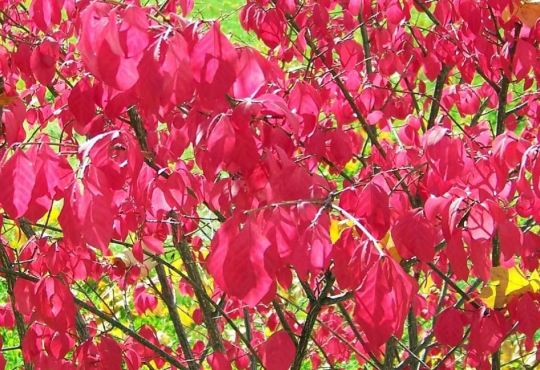
Introducing 4 Invasive Plant Species
Japanese Barberry is a popular ornamental plant used in landscapes across the east coast of the United States. However, as plant health care experts have become more familiar and knowledgeable, the plant has been identified as highly invasive. In addition, the shrub, known for its striking color during fall, is a host for several human diseases, including Lyme disease.
Burning bush is a flowering plant native to China, Japan, and Korea. The plant is famous for its vibrant red foliage during the fall. Burning bush is an invasive species because the plant creates extremely dense thickets and complex root systems, crowding out many native plant species.
Flowering pear trees, such as the Callery Pear, will be another banned plant species in Pennsylvania as of Feb. 10, 2024. Another species popular for its appearance, Callery Pear is similar to Burning bush because the tree proliferates and forms dense thickets, preventing other plants from growing.
Four species of privets, Chinese, European, Japanese, and border privets, can seed into the wild environments and prevent native plants needed by native wildlife and pollinators from growing.
Advantages of Native Plant Species
Native plant species offer advantages over invasive plants in a landscape. One advantage is that native plants are adapted to local soils, climates, and conditions. As a result, native plants will persist through tough climate conditions like frost and drought. Another benefit is that in their environment, native plants require less maintenance, such as water and soil amendments.
Examples of Pennsylvania Native Species
Some examples of native species of plants in Pennsylvania are as follows:
Trees: Eastern Redbud, Dogwood, and Red Maple
Shrubs: Azaleas, New Jersey Tea, and Smooth hydrangea
Perennials: Virginia bluebells, Black-eyed Susan, and Butterfly milkweed
Next month we will discuss the Japanese Barberry in more detail: what the plant looks like, what makes the species invasive, the potential for harm, and control methods and solutions.
Contact Burkholder PHC for Invasive Plant Treatment & Removal
If you are concerned about invasive plants in your landscape or want more information because these plants are affecting your property, contact Burkholder PHC. We provide a free evaluation by our highly experienced, qualified plant health care experts to help remove and control invasive plants and control any adverse effects. Contact Burkholder PHC today for a free consultation.
Blog is originally published at: https://www.burkholderphc.com/introduction-invasive-plants/
It is republished with the permission from the author.
#invasive plants#plant health care services#plant health care#Invasive Plant Species#Advantages of Native Plant Species
0 notes
Link
0 notes
Text

Acer palmatum ’Atropurpureum’ — Japanese maple a.k.a. palmate maple a.k.a. smooth Japanese maple
6 notes
·
View notes
Link
0 notes